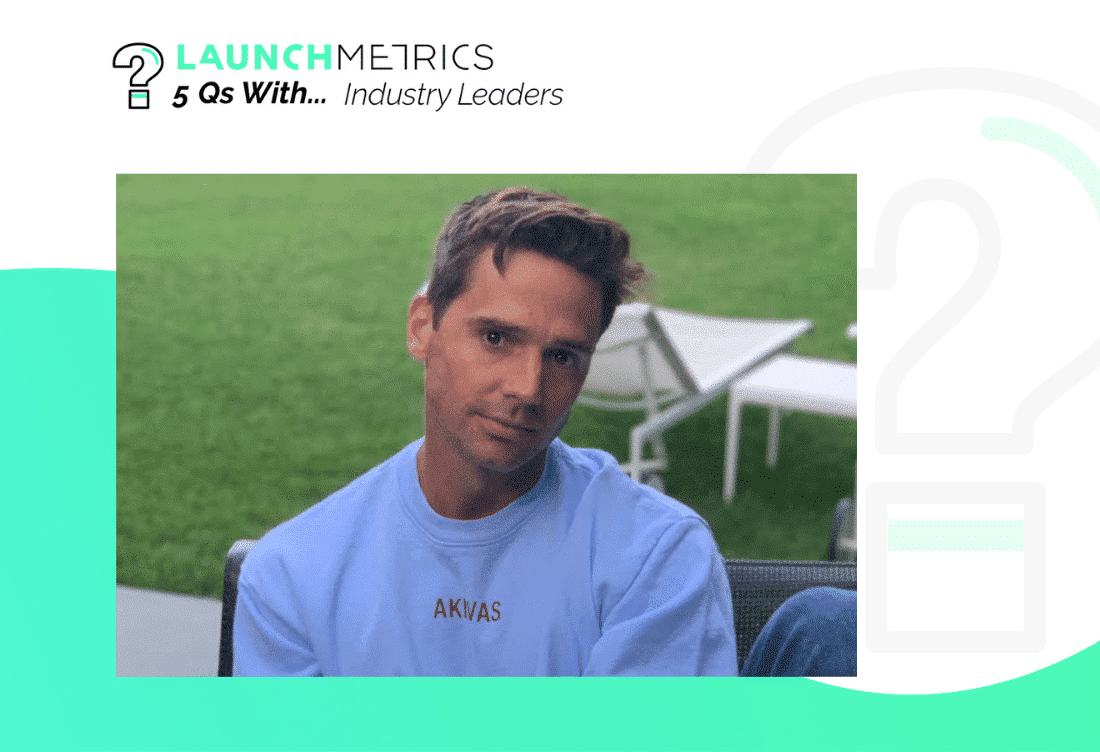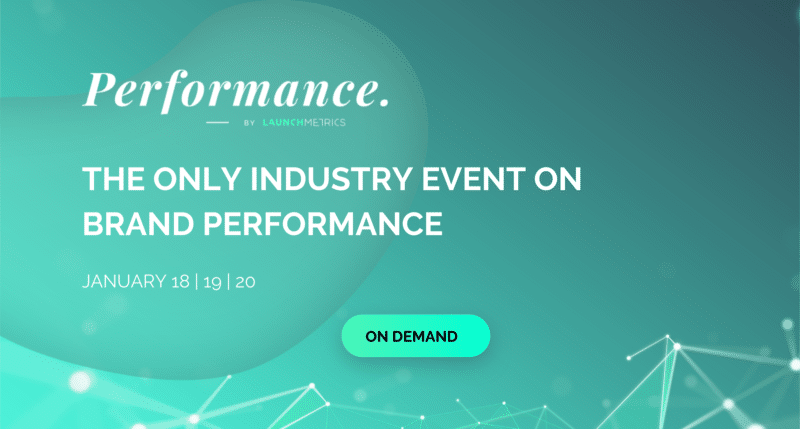The Launchmetrics 5 Questions With… interview series provides a way to connect leaders from the fashion, luxury, and beauty industries, and gives a platform for them to share their best advice and expertise. For this episode of the series, we interviewed Alberto Junco, Senior Director for Digital Marketing and E-commerce at Furla.
With over 15 years of digital marketing and eCommerce experience, Alberto is passionate about creating digital experiences that help customers achieve their goals. Since moving to New York, he has led the redesign of a new eCommerce experience for Furla in the Americas. Prior to joining the iconic Italian affordable luxury accessory brand, Alberto led the Digital Marketing efforts at London department store Harrods.
1. What do you love about your job?
Hi everyone. I’m Alberto, I’m based in New York and I lead the e-commerce, marketing and CRM for, for Furla in the Americas – that’s Canada, the US and South America.
Thinking about what I love about my job… I’ve been working in the same industry such as digital marketing for now 15 years. And what I really like is how it’s connected with other departments. I work with all the different departments in the company. So I see the entire process: the launch of a product, how it goes from production to planning and allocation, to merchandise, to be sold and merchandised to e-commerce, digital marketing, PR communication, etc. I really appreciate being in this position, because it’s not just what the title says; you are involved in much more. Working in the marketing and e-commerce arena, you are involved in the entire process: working with all the different departments of the company, and I think that’s very important. Including finance a lot of times!
2. How has the industry changed since you began your career?
Even if I don’t want to say it out loud… I started my career quite a long time ago. Actually, when I started, the companies were not that much focused on digital as they are now, obviously. It was all more about traditional marketing, let’s say, and as well, e-commerce was not the predominant channel as it is now. At the time, for companies, the most important channels of income were direct stores, specialty stores, the wholesale channel, etc. E-commerce was definitely not as predominant as it is right now. So for me, this is what has changed the most, at least in my industry.
Additionally, brands are also more focused on marketing. What now is a very normal strategy such as omnichannels, which we’re now hearing over and over, 10-15 years ago was the beginning of implementation. Omnichannels were only used by a few major fashion groups. While now, it’s expected to be the norm and much more widely used by retailers.
Something else that has changed obviously is influencer marketing, that at the time was not really even existing. While nowadays, is our bread and butter. Consumers have gone from trusting influencers, to mistrusting them and then trusting them again. It is a very beautiful process to see how consumers are driving the trends in terms of the marketing channels or marketing tools that we, as professionals in the sector, are now using (i.e. social media platforms).
Deep diving into the marketing aspect – experiential marketing is something that has grown in the past 10-15 years. Before, it was very rare to see some pop-ups for example, while now it is again our bread and butter: creating high awareness and revenue for brands. And nowadays, every single brand is doing pop-ups or events focusing on creating that kind of experience that years ago was not even on the table as a marketing strategy for a fashion company. So, it’s nice to see that.
On another side… In the early days, consumers, for example, loved to showcase brand names on their accessories and clothes. This has taken a major turn in the opposite direction: there are niche retailers which are no longer interested in carrying brands “heavy on logos”. And brands have taken notice: for example, Louis Vuitton already adjusted to this change years ago by introducing more minimally branded designs. But again, fashion is a bit cyclical, and now we are seeing that the logo branded trend is back. And this is the true beauty of the industry that I’m working on: it continues to change. And the consumer, at the end of the day, is clamoring for that: these new generations, such as Gen Z, are now starting to be interested in logos and you see Balenciaga partnering with another brand of the group, doing double logo collections, to engage this target. Therefore the demands from new generations is influencing brands and setting trends.
Something else that has evolved quite a lot is how e-commerce and marketing teams have started to work together to create a better customer experience. Due to the importance of the e-commerce business nowadays, the marketing teams are more involved now: strategizing the entire process of online shopping, returns, checkouts, etc. Brands have now realized how important this channel is, and they really want to convert every visit into a purchase. The marketing point of view is very important on that.
3. Launching products and collections have been challenging for everyone during the pandemic lockdown. What lessons have you learned from this new virtual world we had to adapt to?
A craving for human connection and community was seen clearly during the lockdown periods: people have felt lonely and they really needed that social connection, etc. For example, in Furla we have been always thinking about how we can create an online community for our clients, our followers, etc. to feel part of our family, to feel like Furla is there with them. For this reason, online marketing and promotional events were accepted with open arms by our consumers. We did a lot of online activations and were working pretty well, because obviously people were in their homes and they were craving this kind of content. This trend has continued even after the lockdowns, at least in the US. Now everything is starting to be more open and we are seeing this trend continue and people are still more connected with us online than offline. Probably this trend will continue to move forward, as people are now more familiar and secure with using online platforms to engage, interact and so on.
However, promotional events still need to have more one-on-one interactions. For example, watching a fashion show on your computer or TV screen is not very engaging. So, as professionals in the fashion industry, we need to come up with alternative solutions that bring more interaction between the user and the brand. In fact, we are now thinking about different options on how we can develop tools for our consumers to be more engaged with our content. Few examples: online shopping consultation masterclass, where a stylist shows the product details and show how to style it, or a color-match class where the attendees learn how to match their outfits.
Adding the human factor to an online experience is now much more important than before the pandemic. I think people are craving for that interaction with humans, and it’s very important for us marketers to understand what people need and are craving for.
4. If you had a magic wand and could create one tool that would help the fashion industry, what would it be?
It is not necessarily a tool, however, specifically for Furla in the US, considering where we stand currently in the marketplace, I wish for a strong brand awareness, which is much of a necessity. Furla is known in the US only amid some minority groups, largely consisting of consumers which identify themselves as Asian. At this moment, the US market does not have enough brand awareness locally to create a strong business with high-profit margins on a full-price model. With that, I’ll say that generally, for a marketer, brand awareness is truly important.
Other colleagues from different departments may not understand a lot of the marketing practices and strategies because marketers focus on brand awareness, an ephemeral concept which is difficult to explain, especially when associated with revenues, but truly important. Sometimes, when discussing a marketing activity, I have to say that there is actually no physical revenue at the moment and the revenue will come, but you need to work on building that brand awareness first. Therefore, it’s another part of our job, as a marketer, to manage expectations: you need to explain, with a monetary value, why a certain activation has been put in place.
Going back to the US market, it’s also interesting for us to see how most brands in this market have secured their market position by selling their first line to the affluent, while the secondary segments and licensed products were later introduced to increase market serves. Generally, in the current market situation, it’s quite challenging to balance the drive to sale performance without impacting perceiving brand value. So it’s something that we have been working on at Furla while managing the local brand awareness. The US is very competitive in terms of pricing and we often need to think out of the box and say: okay, we cannot compete with this one and we don’t want to compete with the other ones, so we can protect our brand. So for us, it’s really important to work on our values such as Italian craftsmanship and get our audience to understand the importance of our brand and our values.
5. What is one tip you would give to your younger self?
Every tool and platform can be learned easily and on the job. What will matter are the skills such as networking, creating authentic relationships, the ability to research, managing stress and be driven by a positive mindset, even in high pressure environments. Work on the softer skills or your mindset, everything else will fall into place.
Sometimes as a young professional, I was discouraged thinking: “No, I wouldn’t be able to do this. I wouldn’t be able to do that”. In reality, I have been always able to learn what I needed to learn, and actually it’s a beautiful process. Soft skills such as networking and creating relationships are essential, because at the end of the day your team is very important and companies are made by people. People in your team are what is important: creating those connections and create those relationships is very fundamental. You are going to not just work with them, but you will learn with them; you’re going to be happy with them, be sad with them, even cry with them sometimes!
To hear more top insights from key industry leaders, watch the on-demand sessions from our #Performance2022 virtual summit by clicking the banner below!

